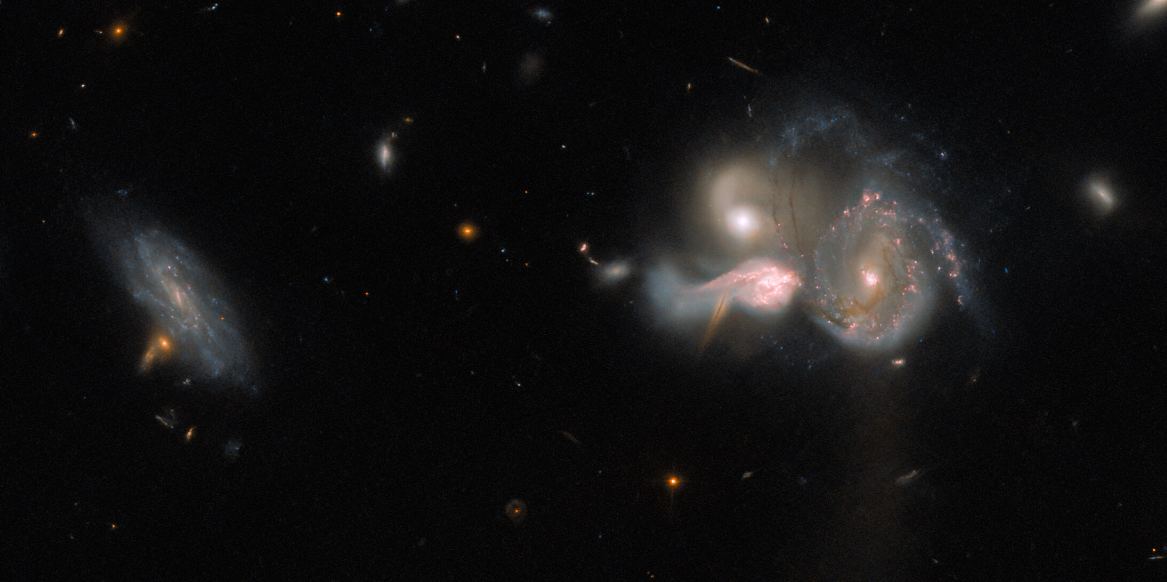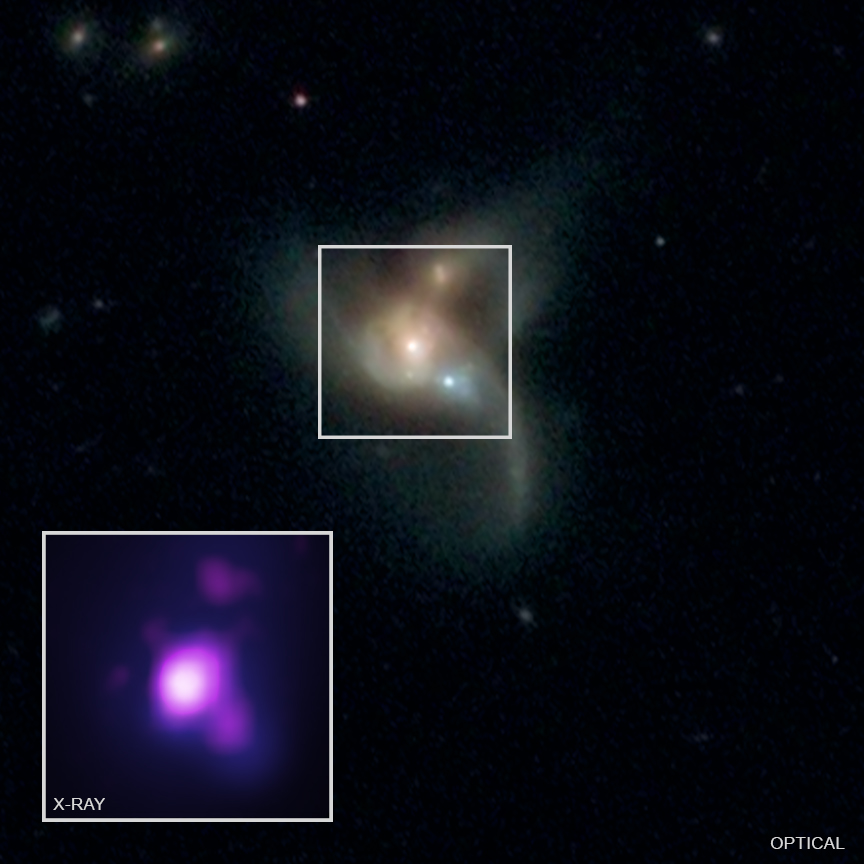When is 50,000 light-years only a small distance? When three galaxies are that close to one another. At that range, they’re fiercely interacting.
In the case of the three galaxies referred to as SDSSCGB 10189, they’re 50,000 light-years apart and growing closer as they merge into a single massive galaxy.
Continue reading “Hubble Sees an Epic Merger of Three Galaxies”

